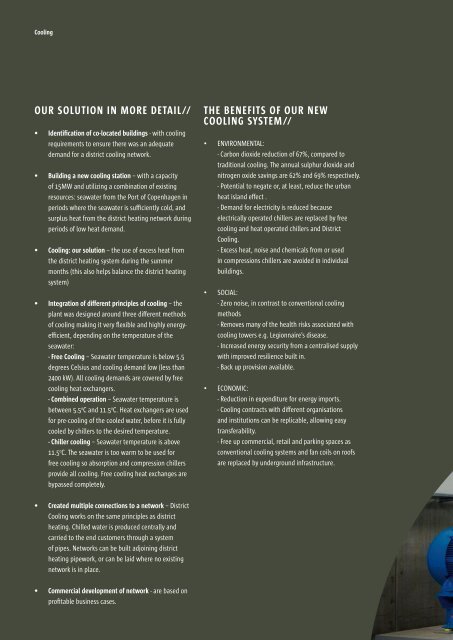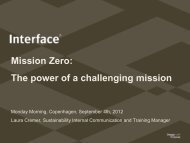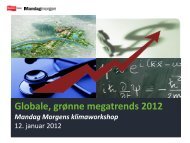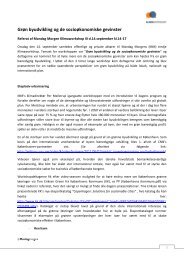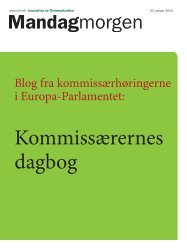Copenhagen: Solutions for Sustainable Cities - Arup
Copenhagen: Solutions for Sustainable Cities - Arup
Copenhagen: Solutions for Sustainable Cities - Arup
- No tags were found...
You also want an ePaper? Increase the reach of your titles
YUMPU automatically turns print PDFs into web optimized ePapers that Google loves.
CoolingOur solution in more detail//• Identification of co-located buildings - with coolingrequirements to ensure there was an adequatedemand <strong>for</strong> a district cooling network.• Building a new cooling station – with a capacityof 15MW and utilizing a combination of existingresources: seawater from the Port of <strong>Copenhagen</strong> inperiods where the seawater is sufficiently cold, andsurplus heat from the district heating network duringperiods of low heat demand.• Cooling: our solution – the use of excess heat fromthe district heating system during the summermonths (this also helps balance the district heatingsystem)• Integration of different principles of cooling – theplant was designed around three different methodsof cooling making it very flexible and highly energyefficient,depending on the temperature of theseawater:- Free Cooling – Seawater temperature is below 5.5degrees Celsius and cooling demand low (less than2400 kW). All cooling demands are covered by freecooling heat exchangers.- Combined operation – Seawater temperature isbetween 5.5 o C and 11.5 o C. Heat exchangers are used<strong>for</strong> pre-cooling of the cooled water, be<strong>for</strong>e it is fullycooled by chillers to the desired temperature.- Chiller cooling – Seawater temperature is above11.5 o C. The seawater is too warm to be used <strong>for</strong>free cooling so absorption and compression chillersprovide all cooling. Free cooling heat exchanges arebypassed completely.The benefits of our newcooling system//• Environmental:- Carbon dioxide reduction of 67%, compared totraditional cooling. The annual sulphur dioxide andnitrogen oxide savings are 62% and 69% respectively.- Potential to negate or, at least, reduce the urbanheat island effect .- Demand <strong>for</strong> electricity is reduced becauseelectrically operated chillers are replaced by freecooling and heat operated chillers and DistrictCooling.- Excess heat, noise and chemicals from or usedin compressions chillers are avoided in individualbuildings.• Social:- Zero noise, in contrast to conventional coolingmethods- Removes many of the health risks associated withcooling towers e.g. Legionnaire’s disease.- Increased energy security from a centralised supplywith improved resilience built in.- Back up provision available.• Economic:- Reduction in expenditure <strong>for</strong> energy imports.- Cooling contracts with different organisationsand institutions can be replicable, allowing easytransferability.- Free up commercial, retail and parking spaces asconventional cooling systems and fan coils on roofsare replaced by underground infrastructure.• Created multiple connections to a network – DistrictCooling works on the same principles as districtheating. Chilled water is produced centrally andcarried to the end customers through a systemof pipes. Networks can be built adjoining districtheating pipework, or can be laid where no existingnetwork is in place.• Commercial development of network - are based onprofitable business cases.


